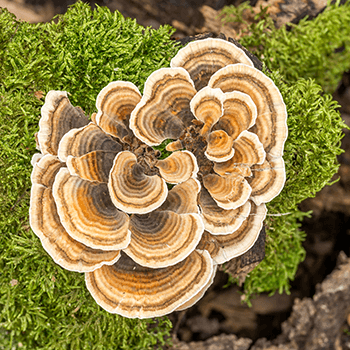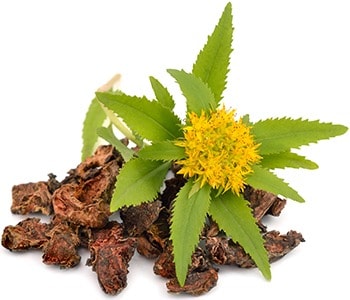6 Types Superfood Nutrition Optimal Wellness • Elevated Infrared Sauna Studio Las Vegas and Henderson
Everyone knows that the human body requires proper nutrition in order to live. And it’s safe to say that most everyone knows that eating healthy is necessary in order to live well. So why then do so many people seem to come up short in achieving the types of life-changing results they want. Even when following the eating advice given to them by their doctors and dietitians?
The definition of what it means to “eat healthy” varies widely depending on who you ask. For some, eating fast food 3 times a week instead of 5 means they’re doing a good job at staying healthy. For others, eating healthy means popping a multivitamin after a sugar-filled breakfast of doughnuts and muffins and calling it a day.
Avoiding fast food and taking multivitamins aren’t bad things, of course. But with the challenges we face in the modern world, these things simply aren’t enough to really achieve an optimal level of wellness that leaves the body feeling good and full of energy. Supercharging your health requires a whole lot more than just eating a salad every now and again or switching to bottled juice instead of soda pop. It requires dialing in on practical ways to mega-boost your diet with superfood nutrition from as many different sources as possible.
It might sound complicated right out of the gate, but learning these hidden tricks of the dietary trade doesn’t have to be overwhelming, and it certainly isn’t unattainable. When it comes to superfood nutrition, there are six major categories that serve as a great starting point if you’re really serious about fast-tracking your way to real health.
Focusing on including more of these foods into your daily routine is a surefire way to get a head start on forging a solid pathway to what we all hope to achieve − optimal wellness.
Superfood #1: Medicinal Mushrooms
 Whether sautéed or stir fried, mushrooms are a tasty addition to almost any savory dish. But did you know that there are more than 10,000 different varieties of mushrooms just in North America alone? Among these, many mushrooms fall into the therapeutic category of medicinal fungi, as they offer a diverse array of health benefits, some of which may surprise you.
Whether sautéed or stir fried, mushrooms are a tasty addition to almost any savory dish. But did you know that there are more than 10,000 different varieties of mushrooms just in North America alone? Among these, many mushrooms fall into the therapeutic category of medicinal fungi, as they offer a diverse array of health benefits, some of which may surprise you.
Turkey tail (Trametes versicolor) mushrooms, for instance, possess powerful antioxidant potential, helping to enhance the immune system and lower cholesterol levels.
Reishi (Ganoderma lucidum) mushrooms are similarly immune-boosting, also helping to ward off viruses while calming the mind. In the event that you encounter a poisonous mushroom, reishi mushrooms can further serve as a potent antidote, while also helping to balance the adrenal glands and promote feelings of calm.
You may have heard of shiitake (Lentinula edodes) mushrooms because they’re popular in cooking. But did you know that they’re also anti-tumoral and antiviral? Shiitake mushrooms are so medicinal, in fact, that herbalist Christopher Hobbs, editorial advisor for Herbs for Health, says they’re effective for nearly every ailment: including immune disorders, allergies, candida, the common cold, influenza, and cancer.
Similar benefits can be found in maitake (Grifola frondosa) mushrooms, which have been shown in scientific studies to fight cancer and inhibit tumor growth. Maitakes are likewise suitable for helping to naturally lower blood pressure levels while balancing cholesterol levels.
And who could forget about Lion’s Mane (Hericium erinaceus), the mushroom that looks exactly like it sounds! Considered by world-renowned fungi expert Paul Stamets to be the world’s premier “smart” mushroom, Lion’s Mane offers immense benefits to the brain, nervous system, immune system, and heart. Not only does Lion’s Mane help to improve cognitive function, it also helps promote neural growth by stimulating the body’s Nerve Growth Factor (NGF).
Superfood #2: Exotic Superfruits

We’re all familiar with common fruits like apples, oranges, and strawberries. But what about not-so-common varieties like acerola cherry (Malpighia emarginata) and Indian gooseberry (Emblica officinalis)? Both exotic superfruits contain some of the world’s highest levels of natural vitamin C! Both can do wonders for the body in terms of strengthening its defenses and improving its overall functionality.
Studies show that acerola cherry is a powerful antioxidant fruit rich in flavonoids like quercetin. They support cardiovascular, immune, and respiratory health.
Acerola cherry is also a potent DNA protector that minimizes oxidative damage and ultimately helps to prevent the types of harmful mutations that lead to cancer growth and proliferation.
Indian gooseberries are similar in that they’re likewise rich in anthocyanin antioxidants that help to combat early aging while simultaneously stamping out disease-causing inflammation. This, combined with their rich density of brain-boosting omega-3 fatty acids and an array of other health-promoting vitamins and minerals, makes the Indian gooseberry exactly the type of thing you need to achieve your health goals.
Superfood #3: Sprouted Seeds
These tiny packages of nourishment are where life begins, which explains why they’re also an incredibly important part of any healthy diet. But even for all of their many health benefits, seeds become even healthier when they’re sprouted. Sprouting unlocks a cornucopia of seed nutrition that would otherwise not be accessible by the body. Seed germination not only makes seeds more nutritionally bioavailable, it also boosts their overall nutrient content − in many cases by dramatic amounts
Sprouting is especially important because it deactivates certain “anti-nutrients” in seeds. This can inhibit nutrient absorption and even rob your body of its own nutrient stores. Such anti-nutrients include things like phytic acid, enzyme inhibitors, lectins, saponins, and polyphenols. If you’ve ever felt like your body doesn’t agree with seeds, it could be because of these anti-nutrients. These anti-nutrients are effectively removed during the sprouting process.
Superfood #4: Fermented Herbs
 Herbs are already an underrated dietary element, and fermented herbs especially so. Most people aren’t chowing down on things like holy basil and lemon balm let alone fermented varieties of these precious herbs. This is a shame considering their immense health benefits.
Herbs are already an underrated dietary element, and fermented herbs especially so. Most people aren’t chowing down on things like holy basil and lemon balm let alone fermented varieties of these precious herbs. This is a shame considering their immense health benefits.
Like sprouting, fermenting helps to break down and convert one type of nutrient into another, making it more digestible and assimilable than it otherwise would be in its unfermented form.
Ashwagandha is one type of adaptogenic herb that’s better fermented than unfermented. Boasting a laundry list of health benefits that include support for the thyroid gland, adrenal glands, immune system, brain, and blood, ashwagandha is an excellent herb to start including in your diet.
So are turmeric and rhodiola, two other “super” herbs that rank amongst the most powerful anti-inflammatory herbs in the world. What’s even better is that their beneficial effects are greatly amplified when these herbs are fermented.
Superfood #5: Probiotics
Without these active little critters in our bellies, we would have a very difficult time digesting our food. Probiotics perform the digestive equivalent of both sprouting and fermenting in the gut. They help balance the microbial ecosystem keeping a close eye on foreign invaders. This makes sure everything we eat is digested in a way the body can use for growth and repair.
There are untold numbers of probiotic bacteria and bacterial colonies that live inside our digestive tracts, not to mention the many varieties that live in soil. In a perfect, chemical-free world, these soil-based probiotics would enrich the foods we eat while they grow. However, oftentimes these are missing, which is why supplementation can be beneficial. One probiotic strain worth supplementing with is Bacillus subtilis. Research suggests helps to improves the microbial environment in the intestines while boosting the activity of digestive enzymes.
Feeding these and other probiotics can perform their respective functions. Fulvic acid and humic acid are two additional prebiotic “nutrient boosters” that function similarly to probiotics. Helping to activate other nutrients and make them more bioavailable, these organic, soil-based pro-nutrients actively support nutrient metabolism. They also help to balance gut function. This is why they’re sometimes categorized as probiotics.
Superfood #6: Enzymes
Last, but certainly not least, are enzymes. These protein catalysts function as the energy force for the entire body. Enzymes are essential for the breakdown of food for energy and cellular metabolism. They also serve as the engineers, technicians, and maintenance crews. They keep the many vital systems of the body functioning at full speed, and with optimal efficiency.
Enzymes are perhaps the most overlooked dietary element because many people don’t even know what they are. And yet, without them, life itself would not exist. Cooked, processed, and chemical-treated foods − which many people eat on a regular basis − are mostly devoid of enzymes. This makes these foods harder for the body to digest.
The following are among the most important enzymes lost as a result of processing and heating that are worth supplementing with in order to correct this deficiency:
- Cellulase: Necessary to break down plant fiber in greens, sprouts, herbs, and fruits
- Beta-glucanase: Necessary to break down fungi, yeast, and cereal bran fiber
- Amylase: Necessary to break down carbohydrates and starches
- Xylanase: Necessary to break down “tougher” fiber in beans, cereal grains, and certain vegetables
- Protease: Necessary to break down protein
- Glucoamylase: Necessary to break down carbohydrates and starches
- Phytase: Necessary to convert “anti-nutrients” in beans, seeds, legumes, and grains into nutrients and trace minerals
- Pectinase: Necessary to break down pectin fiber in fruits and vegetables
- Lipase: Necessary to break down fats
- Lactase: Necessary for processing milk lactose
- Alpha-galactosidase: Necessary to break down complex carbohydrate foods like cruciferous vegetables
- Hemicellulase: Necessary to break down plant fiber in greens, sprouts, herbs, and fruits
- Invertase: Necessary to break down complex sugars into simple sugars




